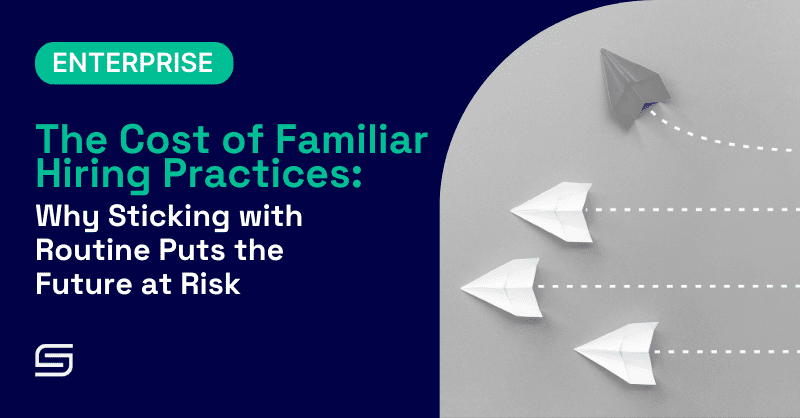The Cost of Familiar Hiring Practices: Why Sticking with Routine Puts the Future at Risk

This post originally appeared on Craig’s LinkedIn.
Relying on what’s familiar can feel productive.
Organizations have used the same, tried-and-true hiring methods for decades. Posting open positions, reviewing resumes, and aiming to fill vacancies from an existing pool of qualified candidates has become second nature.
But as workforce needs evolve with the demands of emerging technology, those routines aren’t keeping up.
Relying on long-standing methods is no longer enough.
With the shortage of skilled talent growing, the very practices that once worked are now putting businesses at risk of lagging behind.
The Hidden Risks of Routine
It’s easy to keep doing what’s familiar—posting job ads, screening candidates, and hoping the right fit appears. But for industries like advanced manufacturing, where specialized skills and timely hiring are critical, these methods are reaching their limits. Experts forecast a shortage of over 2 million skilled manufacturing jobs by 2030.
These hiring practices, though routine, may unintentionally be putting companies at risk. Industries relying on familiar tactics risk missing out on qualified talent and delaying critical operations, especially as the demand for skilled roles in fields like semiconductor engineering and data center management grows.
You can’t build tomorrow’s workforce using yesterday’s methods.
A Call for New Talent Strategies
So, what’s the alternative?
Companies need fresh approaches that aren’t bound to routine.
The Hire, Train, Deploy model, for instance, presents a strategic alternative that meets the needs of companies by tapping into new sources of talent. But broadly speaking, here are some ways to rethink talent acquisition:
- Skills-Based Hiring: Rather than focusing on degrees or specific past job titles, prioritize the specific skills needed for the role.
- Proactive Training & Upskilling: Instead of waiting for a perfect match, invest in training programs that can build skills to fit unique needs.
- Flexible Workforce Models: In advanced manufacturing, adaptability is essential. As production cycles accelerate, demand for skilled workers spikes. Traditional methods may not be able to match these cycles in a timely way.
Clinging to familiar methods is no longer the safer route. The companies that will succeed in the future are those willing to adapt their approach to the shifting workforce landscape.
Why Advanced Manufacturing Needs to Lead the Way
Let’s focus specifically on advanced manufacturing.
With the pace of change in this sector, demand for skills is evolving faster than ever. Meanwhile, a shrinking talent pool only compounds the challenges.
Advanced manufacturing is already feeling the impact of these changes. But companies willing to try new approaches, like the hire, train, deploy model, are finding that fresh strategies yield stronger, more prepared teams.
In semiconductor manufacturing, for example, engineers aren’t simply hired—they’re trained to meet specific demands of production environments and then onboarded, fully equipped to handle their responsibilities.
Making the Shift
So, why is it difficult to break away from the familiar?
It often boils down to habit.
Routine practices in hiring feel automatic; they’re ingrained in the way business has always been done. But while these methods might have been effective in the past, they don’t align with today’s demands.
For advanced manufacturing, it’s time to reevaluate and rebuild how talent is brought on board.
Companies that recognize the need for change will lead the way in this critical shift.
The Future is Now
The companies that will thrive in this new landscape are the ones willing to adapt their approach today. Smoothstack’s Hire, Train, Deploy model is one way companies are addressing these challenges, building a future-ready workforce by focusing on flexibility and adaptability.
Whether you choose HTD or another talent acquisition strategy, the most important takeaway is that the familiar methods that served in the past may no longer be enough. Advanced manufacturing, and every other industry, must be willing to expand their approach.
Not tomorrow.
Today.
Let’s Build Your Team
Connect with the Smoothstack team to learn how to close your digital skills gap with a custom-trained team.